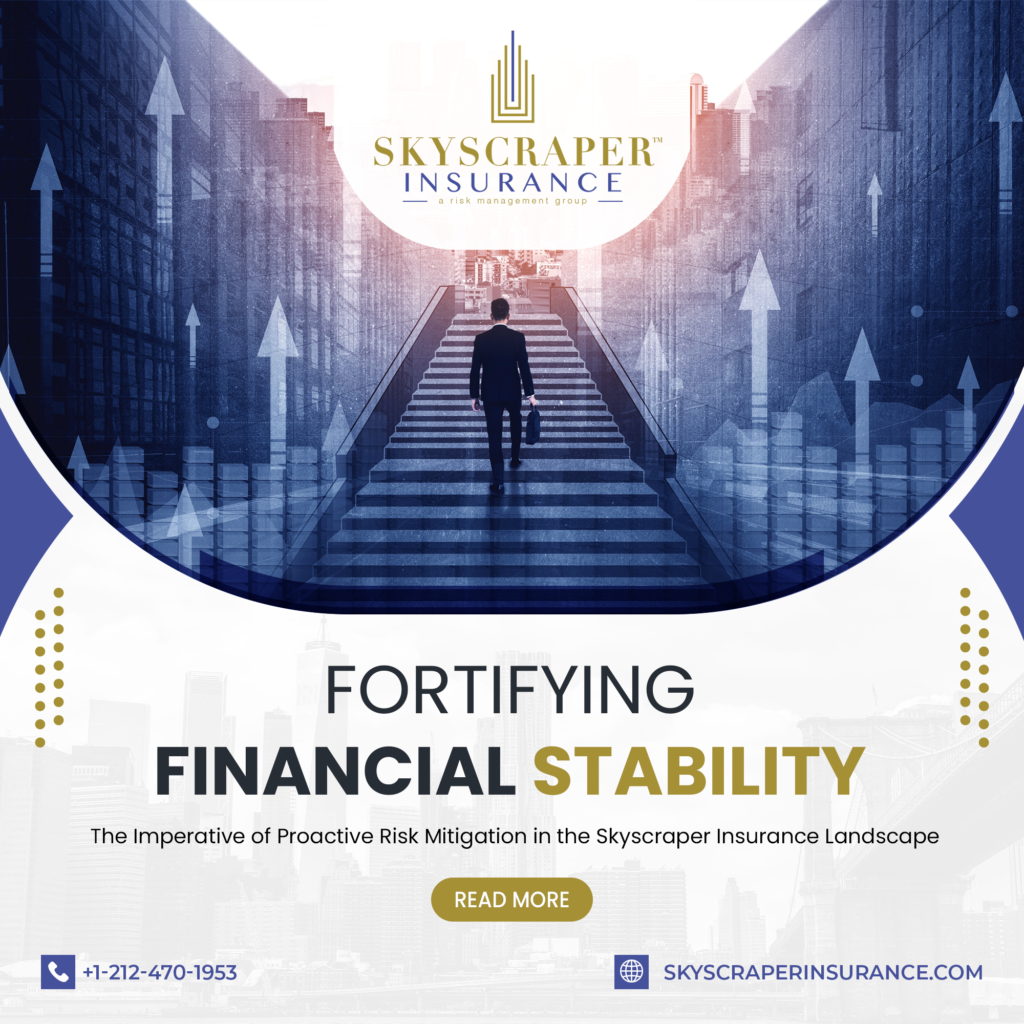Specific Technologies Driving Insurtech Investment in 2024

Understanding the Funding Decline The decrease in funding does not necessarily spell trouble for the insurance sector but instead highlights a strategic shift, the report suggests. “The insurance industry, like many sectors, is focusing on the most promising ventures with substantial insurance potential,” the report explains. “Insurers are directing their investments toward key areas and current trends such as embedded insurance, employee benefits, and cyber risk management. This strategic investment approach signals a forward-looking mindset within the industry.” Three Key Insurtech Trends for 2024 The report identifies three major trends shaping insurtech investments in 2024: Public Insurtech Companies: Financial and Growth Strategies The report also notes that public insurtech companies are prioritizing revenue growth as their main goal. These firms are restructuring their financial strategies to boost cash flow and capitalize on rising revenue streams. Their growth prospects are supported by expanding asset portfolios and strong market demand. “Public insurtech companies are focusing on revenue growth and optimizing their financial frameworks to increase cash flow,” the report states. “The growth potential for these companies is driven by increasing revenue opportunities, broadening asset bases, and a robust market for their services.” In summary, while global insurtech funding saw a decline in 2023, the industry’s focus on GenAI, digital process management, and connected insurance technologies is setting the stage for a dynamic and forward-looking 2024.
Insurer Secures Unanimous Supreme Court Victory in New York Choice of Law Dispute

In the world of sports, a clean sweep, a shutout, or a perfect game is the ultimate achievement. In the legal arena, a unanimous decision from the U.S. Supreme Court is equally rare and significant. In a notable legal triumph, Great Lakes Insurance SE achieved a unanimous 9-0 victory in the Supreme Court on February 21, 2024. This victory follows a protracted legal battle that began in the District Court of Pennsylvania, advanced to the U.S. Court of Appeals for the Third Circuit, and culminated in the Supreme Court’s decisive ruling. Background of the Case: Great Lakes Insurance SE v. Raiders Retreat Realty Company The heart of the dispute was the insurance contract’s clause selecting New York law to govern any future legal conflicts. Although the financial implications of this case were relatively minor compared to the broader marine insurance industry, the insurer’s determination to uphold a crucial maritime legal principle has significant long-term implications for marine insurance. Faced with the insured’s counterclaims—including allegations of breach of fiduciary duty, insurance bad faith, and violations of Pennsylvania’s Unfair Trade Practices Law—the insurer was confronted with serious risks. Such claims could lead to the shifting of attorney’s fees, treble damages, and more, which might normally encourage insurers to settle rather than risk pursuing justice. However, Great Lakes Insurance, supported by The Goldman Maritime Law Group, opted to challenge the Third Circuit’s decision and seek clarity from the Supreme Court. Supreme Court Ruling: A Landmark Decision In a landmark ruling, Justice Brett Kavanaugh affirmed that choice of law provisions in maritime contracts should be upheld by default. This ruling is a major victory for establishing a consistent federal standard in maritime law and avoiding a patchwork of state laws that could complicate marine insurance disputes. The Supreme Court’s decision overturned the Third Circuit’s earlier judgment, which had questioned whether Pennsylvania’s public policy concerns might override the insurance contract’s choice of New York law. By upholding the New York choice of law clause, the Supreme Court eliminated the extra-contractual bad faith claims under Pennsylvania law, thereby ensuring that the dispute could be resolved based on the merits of the insurance claim itself. Significance of the Supreme Court’s Decision This ruling represents a significant advancement in maritime law, affirming that choice of law clauses in maritime contracts are generally enforceable. The decision establishes a clear, uniform legal framework for resolving maritime contract disputes, which will streamline the process and ensure fair adjudication of future insurance claims. Justice Clarence Thomas’s concurring opinion was particularly notable for its criticism of the 1955 Wilburn Boat v. Fireman’s Fund Insurance decision, which had previously influenced maritime insurance law. Thomas argued that Wilburn Boat was incorrectly decided and stressed that a uniform and enforceable set of rules is essential for the development of maritime law. Impact on the Marine Insurance Industry The Supreme Court’s decision sets a “bright-line” rule affirming that choice of law clauses are valid unless there is a strong argument against the selected jurisdiction. By endorsing New York’s insurance laws as a reasonable choice, the ruling supports a more consistent and predictable legal environment for marine insurers. This decision represents a major step forward in maritime law, helping insurers better assess risks, determine premiums, and ensure fair and efficient resolution of maritime insurance disputes.
Small and Midsize Businesses Optimistic Despite Tough Economy

Most small and midsize businesses feel better about their own finances than the U.S. economy, according to a recent Nationwide survey of 800 businesses. Positive Outlook on Personal Finances More than three out of five small companies and 51% of mid-market companies rate the economy as either ‘poor’ or ‘fair’. However, 51% of small businesses and 73% of mid-market companies rate their own financial situation as ‘good’ or ‘excellent.’ Kristina Talkowski, Nationwide’s senior vice president and head of middle market commercial lines, explained, “Business owners are more optimistic the closer you get to their specific region, industry, or business. This optimism aligns with economic indicators showing a resilient economy but also reflects challenges with high interest rates, material, and labor costs.” Prepared for Challenges Despite facing economic challenges, business owners are taking proactive steps to strengthen their operations and resiliency. “Owners’ optimistic views of their own business conditions stem from their preparedness for future disruptions or expansions,” Talkowski added. Internal Challenges and Employee Benefits Both small and mid-market businesses face internal challenges, including benefits for workers, operational optimization, and managing expenses. “Health insurance and voluntary benefits like pet insurance are crucial for attracting and retaining talent,” said Talkowski. Business owners who increase wages must be aware of the impact on workers’ compensation premiums, which will rise as pay increases. Many are looking to optimize costs without sacrificing long-term protections for short-term savings. Reviewing and Adjusting Insurance Policies The survey revealed that 83% of small businesses and 77% of mid-market companies reviewed their commercial insurance policies in the past six months. Over one-third of mid-market owners either discarded a policy or lowered coverage limits during this period. AI Investments and Workforce Challenges Talkowski highlighted generative AI as an evolving need and challenge for businesses. “Employers need policies to govern the use of AI tools like ChatGPT to secure their business data and processes. While AI can increase efficiency, 43% of workers are concerned about its impact on job security.” The survey showed that mid-market companies are more likely to invest in AI, with 63% of them already doing so, compared to just 27% of small businesses. By understanding the challenges and opportunities within the current economic landscape, businesses can navigate uncertainties and continue to thrive. Skyscraper Insurance is here to support your business with tailored insurance solutions, ensuring your continued success and growth. #BusinessResilience #EconomicOutlook #EmployeeBenefits #AIIntegration #InsuranceReview #SkyscraperInsurance #WeShareYourVisionForABetterTomorrow
D.C. Court Rules Insurers Must Cover $1.5 Million Water Damage Claim

In a significant ruling, the U.S. Court of Appeals for the District of Columbia Circuit has overturned a previous judgment, compelling two insurers to cover a $1.5 million water damage claim. Judge Gregory G. Katsas delivered the opinion, reversing a 2022 trial court decision and instructing summary judgment in favor of real estate developer 3534 East Cap Venture and McCullough Construction. The developers initially filed the claim after spending $1.5 million to remediate water damage at a residential and retail complex in D.C. However, Westchester Fire Insurance Co. and Endurance American Insurance Co. denied coverage, citing a policy exclusion accepted by District Judge Amit P. Mehta. The D.C. Circuit found that the builders’ risk insurance policies cover losses from water damage, even when caused by excluded perils like dampness and temperature changes, provided that direct physical loss by an insured peril follows. Judge Katsas, joined by Judges Cornelia T.L. Pillard and Judith W. Rogers, stated that this ensuing-loss clause mandates coverage for the damages in question. C. Thomas Brown of Silver & Brown, representing the developers, successfully argued the appeal. “This is a significant decision in an area with limited case law,” Brown remarked. “It’s reassuring that our clients will receive compensation for their policy.” Philip C. Silverberg of Mound Cotton Wollan & Greengrass, representing the insurers, has not commented on the ruling. Stay informed and protected with Skyscraper Insurance.We Share Your Vision for a Better Tomorrow. #InsuranceNews #WaterDamage #LegalUpdate #RiskManagement #SkyscraperInsurance #BuildersRiskInsurance #InsuranceClaims
Making a Difference: Philanthropic News in Insurance from Skyscraper Insurance, The Alliance, Invest, and More

Skyscraper Insurance is proud to spotlight the philanthropic efforts making waves in the insurance industry. Erie Insurance has donated $1 million to the United Way of Erie County, a social impact organization dedicated to breaking the cycle of generational poverty through education in Erie, Pennsylvania. This generous donation will help launch the Community Schools Model at Erie High School, enhancing academic growth, addressing basic needs, increasing engagement, boosting attendance, and improving school culture. The National Alliance for Insurance Education & Research has rebranded after 55 years, now known as the Risk & Insurance Education Alliance, or simply The Alliance. This name change reflects their evolution and expanded services as the leading professional-development resource in the insurance industry. Invest has awarded $20,000 in scholarships to three students pursuing insurance-related degrees. This nonprofit organization works in high school and college classrooms across the U.S. to educate, train, and attract the next generation of insurance professionals. At Skyscraper Insurance, we believe in supporting initiatives that inspire positive change and growth within our communities. We Share Your Vision For A Better Tomorrow. #Insurance #Philanthropy #Education #SkyscraperInsurance #MakingADifference #CommunityImpact #FutureLeaders #Scholarships
States with the Highest Workers’ Comp Rates

In 2023, the workers’ compensation market demonstrated significant strength and stability, marking another year of impressive performance for private carriers. According to data from the National Council on Compensation Insurance (NCCI), this sector achieved remarkable results, continuing a decade-long trend of profitability. Key Metrics and Trends Combined Ratio and Premiums:Private workers’ compensation carriers recorded a combined ratio of 86 for the 2023 calendar year, maintaining the combined ratio below 90 for the seventh consecutive year. This consistent performance underscores the financial health and operational efficiency within the industry. Moreover, workers’ compensation premiums saw a modest increase, rising to $43 billion, which is a 1% uptick from 2022. This growth, albeit slight, reflects the sector’s resilience and capacity for steady expansion. Reserve Redundancy:The reserve redundancy in the workers’ compensation sector expanded to $18 billion, highlighting the industry’s robust financial foundation. This redundancy acts as a financial buffer, ensuring that carriers can cover future claims and obligations without significant financial strain. Market Dynamics:The voluntary market carriers showcased their strength as the residual market’s share of the workers’ compensation line continued its downward trajectory. The residual market’s share dropped from 6.1% in 2022 to 5% in 2023. For context, the residual market held a 12.5% share in 2003. This decline indicates a healthier voluntary market where more businesses can secure workers’ compensation insurance through regular market channels rather than relying on state-assigned risk pools. Claim Frequency and Severity In 2023, the frequency of lost-time claims decreased by 8%, which is twice the rate of the long-term average decline. This reduction in claim frequency is a positive indicator, suggesting improvements in workplace safety and risk management practices. Additionally, the severity of claims showed moderation last year, with NCCI reporting a 2% rise in medical-claim severity and a 5% rise in indemnity-claim severity. While these increases are notable, they are relatively modest, indicating controlled growth in claim costs. Opioid Utilization and Prescription Trends Opioid utilization in workers’ compensation claims experienced one of its most significant declines in recent years. According to the Enlyte Group, LLC, opioid utilization per claim dropped by 9.7%, and the cost per claim decreased by 7.2%. This decline reflects ongoing efforts to address and mitigate opioid dependence within the workers’ compensation system. However, the utilization of alternatives to opioids also saw decreases, albeit to a lesser extent. Non-steroidal anti-inflammatory drugs (NSAIDs) saw a 3% drop in utilization, while anticonvulsants declined by 7.4%. Over the past year, eight of the top ten therapeutic drug classes experienced an increase in prescription costs. Notably, two classes saw costs rise by more than 10%. Enlyte reported that utilization per claim fell in every drug class except for medications treating migraines. Migraine medications experienced a 17% increase in utilization and a 10.2% rise in cost, while respiratory medications had the largest cost increase at 14.7% per prescription. These trends highlight the evolving landscape of pharmaceutical management in workers’ compensation. Highest Workers’ Comp Costs by State The slideshow above reviews the states with the highest workers’ comp costs based on the Workers’ Compensation Index Rate, which is a biennial survey conducted by the Oregon Department of Consumer & Business Services’ Information Division. The index rate is calculated per $100 of payroll and serves as the basis for determining final premiums for workers’ compensation insurance. Key States with High Workers’ Comp Rates: These states face higher costs due to a combination of factors including higher average wages, cost of living, and regulatory requirements. Businesses operating in these states must account for these higher insurance costs in their overall risk management and financial planning strategies. Conclusion The workers’ compensation market continues to demonstrate resilience and profitability, with key metrics showing stable or positive trends. However, businesses must remain vigilant about evolving risks and regulatory changes that can impact their insurance costs. By staying informed and proactive, companies can better navigate the complexities of workers’ compensation insurance and ensure they are adequately protected. For businesses looking to optimize their workers’ compensation strategies, it is crucial to work with experienced insurance professionals who can provide tailored advice and solutions. At Skyscraper Insurance, we are committed to helping our clients understand and manage their workers’ compensation needs, ensuring they are prepared for whatever challenges lie ahead. Stay tuned for more insights and updates on the latest trends in workers’ compensation insurance. We Share Your Vision For A Better Tomorrow.
Fortifying Financial Stability: The Imperative of Proactive Risk Mitigation in the Skyscraper Insurance Landscape

Introduction:In the dynamic realm of Skyscraper Insurance, the principles of financial resilience and risk mitigation have assumed paramount importance. As we navigate through an era marked by climate volatility and economic unpredictability, the need for proactive measures to safeguard financial stability has never been more pressing. This article explores the evolving landscape of Skyscraper Insurance, examining the challenges faced and the strategies employed to fortify against potential risks. Rising Challenges:The journey towards financial stability in the Skyscraper Insurance sector is fraught with challenges. A significant concern is the projected 6% increase in insurance premiums expected during the 2024 renewal period. However, luck may play a fickle role in determining the extent of this rise. Furthermore, the industry has been shaken by an alarming 19.8% average annual surge in rates witnessed between 2021 and 2023, driven by inflationary pressures and the escalating frequency of extreme weather events. This surge has been punctuated by numerous billion-dollar weather and climate disasters, necessitating a reevaluation of traditional risk assessment methodologies. Industry Response:In response to the heightened risks associated with certain geographical areas, several prominent insurance firms have made the strategic decision to cease underwriting coverages, highlighting the urgent need for a proactive approach to risk mitigation. This shift underscores the pivotal role played by insurers in shaping the resilience of the Skyscraper Insurance landscape. It also serves as a call to action for stakeholders to reevaluate existing risk management strategies and embrace innovative solutions to address emerging threats. Navigating Uncertainty:Navigating the uncertain terrain of Skyscraper Insurance requires a multifaceted approach. It involves not only identifying potential risks but also implementing robust risk mitigation measures to protect against them. By fostering a culture of preparedness and resilience, insurers can better withstand the challenges posed by volatile market conditions and environmental uncertainties. Collaboration between industry players, policymakers, and other stakeholders is essential to develop comprehensive risk management frameworks that can adapt to evolving threats and ensure long-term financial stability. Conclusion:As we chart a course through the complexities of the Skyscraper Insurance landscape, one thing remains clear: proactive risk mitigation is key to fortifying financial stability. By acknowledging the challenges posed by climate change, economic fluctuations, and other external factors, stakeholders can proactively implement measures to mitigate risks and safeguard against potential losses. Through collaboration, innovation, and a steadfast commitment to resilience, the Skyscraper Insurance industry can navigate through uncertainty and emerge stronger than ever before.
Who’s Utilizing What in P&C Insurance: 2024

Marsh McLennan, in collaboration with Oliver Wyman, has introduced Sentrisk, an AI-driven platform designed to assist businesses in managing global supply chain risk. Sentrisk employs advanced analytics to identify low, medium, and high-risk vulnerabilities at a granular level, including specific sites, suppliers, or components, according to Marsh McLennan. EZLynx has partnered with Citizens Property Insurance Corporation, a not-for-profit property insurer in Florida, enabling Citizens to utilize the EZLynx Rating Engine for over 7,000 Florida insurance agents. This collaboration aims to enhance the process of eligibility determination against the private market for appointed agents during sales and renewals, allowing them to accurately evaluate risk coverage from Citizens and other Florida carriers. Christian Brothers Services has chosen Origami Risk’s multitenant SaaS P&C platform to streamline its policy administration and billing processes, improve service resources for its members, and gain insights into the performance of its current coverage lines. Main Street America Insurance has teamed up with TransUnion to offer specialized cyber risk protection for small businesses. Main Street America’s small business policyholders will now have access to TransUnion’s TruEmpower CyberScout solution, which addresses various cyber security threats such as commercial breach, cyber extortion, and business identity theft. Paragon Insurance Holdings LLC has opted for Kalepa’s AI-powered Copilot underwriting platform to support its Workers’ Compensation, Specialty Property, Small Construction and Contractors, and Auto Dealers programs.
Revolutionizing Retirement in the Insurance Industry: A Comprehensive Approach to Offboarding

As the insurance industry braces for a historic wave of retirements, companies face the challenge of preserving decades of knowledge and experience. By 2028, approximately half of the insurance workforce is set to retire, coinciding with the retirement age of the baby boomer generation. This impending “baby boomer” retirement collapse presents a significant dilemma for companies, as they grapple with the loss of invaluable expertise. For years, retirement has been viewed as a long-awaited escape from the daily grind. However, many retirees find themselves adrift without the structure and purpose that work provides. This transition can be particularly challenging for insurance professionals who have dedicated their careers to the industry. The retirement journey for insurance professionals is evolving, requiring a fresh approach to ensure a smooth transition for both employees and employers. Introducing Retirement Journeys, a personalized pathway designed to guide insurance professionals through the transition out of the workforce. Developed collaboratively with each individual, Retirement Journeys prioritize the preservation of institutional knowledge while supporting employees in their transition to retirement. Understanding the Retirement Landscape For years now, the insurance industry has been inching toward a historic wave of retirement. From 2024 through 2027, more Americans will turn 65 years old than at any point in our country’s history. About 50% of the insurance industry workforce is in line to retire by 2028, and all of the baby boomers will be past the traditional retirement age by 2030. Many of these professionals are already planning their exit strategy. Retirement, however, is not always the idyllic journey it’s often portrayed to be. While some retirees embrace the newfound freedom, others struggle with the loss of identity and purpose that comes with leaving the workforce. This is particularly true for insurance professionals who have spent decades honing their skills and expertise in the industry. The Challenge for Companies The retirement of experienced professionals poses a significant challenge for companies. Losing key employees means losing valuable knowledge and expertise, which can have far-reaching implications for business continuity and succession planning. Companies must find ways to retain institutional knowledge while supporting retiring employees in their transition to retirement. Introducing Retirement Journeys To address the challenges of retirement in the insurance industry, a new approach is needed. Retirement Journeys offer a comprehensive framework for guiding employees through the transition process. Developed in collaboration with each individual, Retirement Journeys prioritize the well-being of employees while safeguarding the continuity of the organization. Key Components of Retirement Journeys Case Studies The Benefits of Retirement Journeys Retirement Journeys offer a fresh approach to retirement in the insurance industry, enabling employees to embark on the next chapter of their lives with confidence while safeguarding the continuity of the organization. By engaging the entire team in the retirement process, companies can ensure a smooth transition and bridge any knowledge gaps that arise. Conclusion The retirement of experienced professionals presents both challenges and opportunities for the insurance industry. By embracing a comprehensive approach to retirement, companies can navigate this transition effectively while preserving institutional knowledge and supporting retiring employees in their journey to retirement.
Title: Innovative Ticketing Protection Solutions: Bridging the Gap between Insurers and Ticketing Platforms

Meta Description: Discover how insurtechs are revolutionizing event ticket protection with tailored insurance and non-insurance solutions to meet the evolving needs of consumers in the $85 billion event industry. Keywords: event ticket protection, insurtechs, insurance offerings, non-insurance solutions, innovative protection offerings, cancel for any reason, festival coverage, full-experience coverage, season ticket holders Innovative Ticketing Protection Solutions: Bridging the Gap between Insurers and Ticketing Platforms As high-value events like the Olympics and Eras Tour shape 2024’s landscape, consumer preferences for event ticketing have evolved post-pandemic. Today’s eventgoers seek protection against unforeseen circumstances like illness, travel disruptions, or cancellations. In response, ticketing platforms are turning to insurance providers for comprehensive protection solutions. Insurance vs. Non-insurance Offerings In the realm of event ticket protection, both insurance and non-insurance solutions play pivotal roles. While traditional event cancellation insurance covers specific reasons for missing an event, non-insurance solutions offer added flexibility and coverage options. These include Cancel For Any Reason (CFAR) and Event Ticket Refund Protection, catering to diverse global audiences. The Role of Insurtechs Insurtechs are pivotal in bridging the gap between insurers and ticketing platforms, leveraging rich data sets and distribution channels to develop innovative protection offerings. These solutions are tailored to the unique needs of event attendees, ensuring comprehensive coverage beyond standard cancellations. Innovative Protection Offerings In conclusion, event ticket protection is an evolving segment where collaboration between insurers, insurtechs, and ticketing platforms is paramount. By understanding and addressing the evolving needs of eventgoers, innovative solutions can provide comprehensive protection, enhancing the event experience for all. #EventTicketProtection #Insurtech #InnovativeSolutions #TicketingPlatforms #CFAR #CancelForAnyReason #FestivalCoverage #FullExperienceCoverage #SeasonTicketHolders #EventInsurance #NonInsuranceSolutions #EventGoers #EventSecurity #PeaceOfMind #EventExperience #RiskManagement #skyscraperinsurance #weshareyourvisionforabettertomorrow
